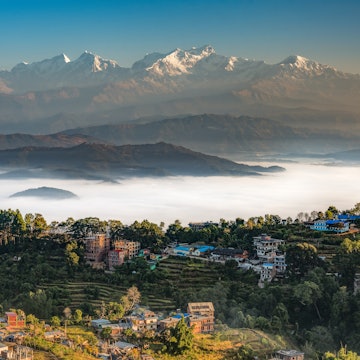

Many avid travellers know that taking a flight can feel extremely dehydrating – now, international aviation journalist John Walton explains why.

Why does flying dehydrate you?
If you’ve taken a long-haul flight on a newer, composite aircraft like the Airbus A350 or Boeing 787, you might have noticed that you got off the plane feeling less jetlagged, with your skin looking better than you expected, and without a dry nose and mouth. To understand how this all works, let’s dive into how the air you breathe on the plane arrives into your nostrils. Cabin air is a mixture of air coming from outside the aircraft and recycled air from inside the cabin. In previous generations of planes, the outside air was bled off from the engine compressors (before the burning jet fuel bit of the process, don’t worry!) but some modern jets like the Boeing 787 bring the air in directly rather than through the engines.
You might think that the higher the fresh external air content and the lower the recycled air you’re breathing, the better, but that’s not necessarily the case as recycled air holds more moisture.
Bear with me, because the details get a little bit squicky but also a little bit interesting. The humidity in the cabin air, especially a while after takeoff, comes from your breath and the breath of your fellow passengers. Good news for those of us in the back of the plane: because there are more people breathing out humid human breaths in closer proximity, the air is more humid than in the rarefied first and business class sections. (Yes, the boffins at Airbus, Boeing and the companies that supply them are working on that!)

Can newer planes save you from getting dehydrated?
Back to our new friends the Boeing 787 and Airbus A350. The cabins of these planes are made from high-tech composites, rather than the aluminium of previous generations of aircraft. To oversimplify, making planes of plastic rather than metal means that there’s a lower risk of rust, so they can increase the humidity in the air you breathe to about 25%. Older planes vary between 10 and 20%, while most normal houses in temperate regions sit around 50% humidity.
The A350 and 787 can also pressurise the cabin to a lower altitude: about 6000 feet rather than the 8000 feet on older planes. That’s something like Denver or Mexico City rather than Bogotá or Addis Ababa, and that two thousand feet makes a huge difference to how you feel, and to how your skin reacts. That’s one of the reasons why these new planes are so popular with travellers.

How can I avoid getting dehydrated on a plane?
But, whether you’re on a new or old plane, how can you avoid drying out? Well, if you’re sensitive to dehydration at home, especially in winter, you probably will be on the plane too. The first trick is to drink water. I’m no doctor, but I tend to go for one large glass or about 250mL (that’s half your average shop-bought water bottle) every hour, especially on longer flights. The common wisdom seems to be to avoid alcohol or caffeine, but in moderation, most folks will be fine, especially if matching each coffee or cerveza with an equal amount of water.
If your nostrils dry out, you can either pick up some saline spray (which is really just salty water) or quite literally snort a few drops of water up your nose to moisturise it. Speaking of moisturising, a good heavy skin lotion is a great thing to pack, even if you need to decant a bit into a smaller pot to get through security.
And the weird frequent flyer thing I’m never without? A little refillable sprtiz bottle of water, like a DIY (and much more environmentally friendly version of that Evian water spray often handed out in first class. I give myself a spritz-spritz every time my skin feels a little dry, and sometimes breathe a cloud of spray through my nose. It looks weird, but it works wonders.














